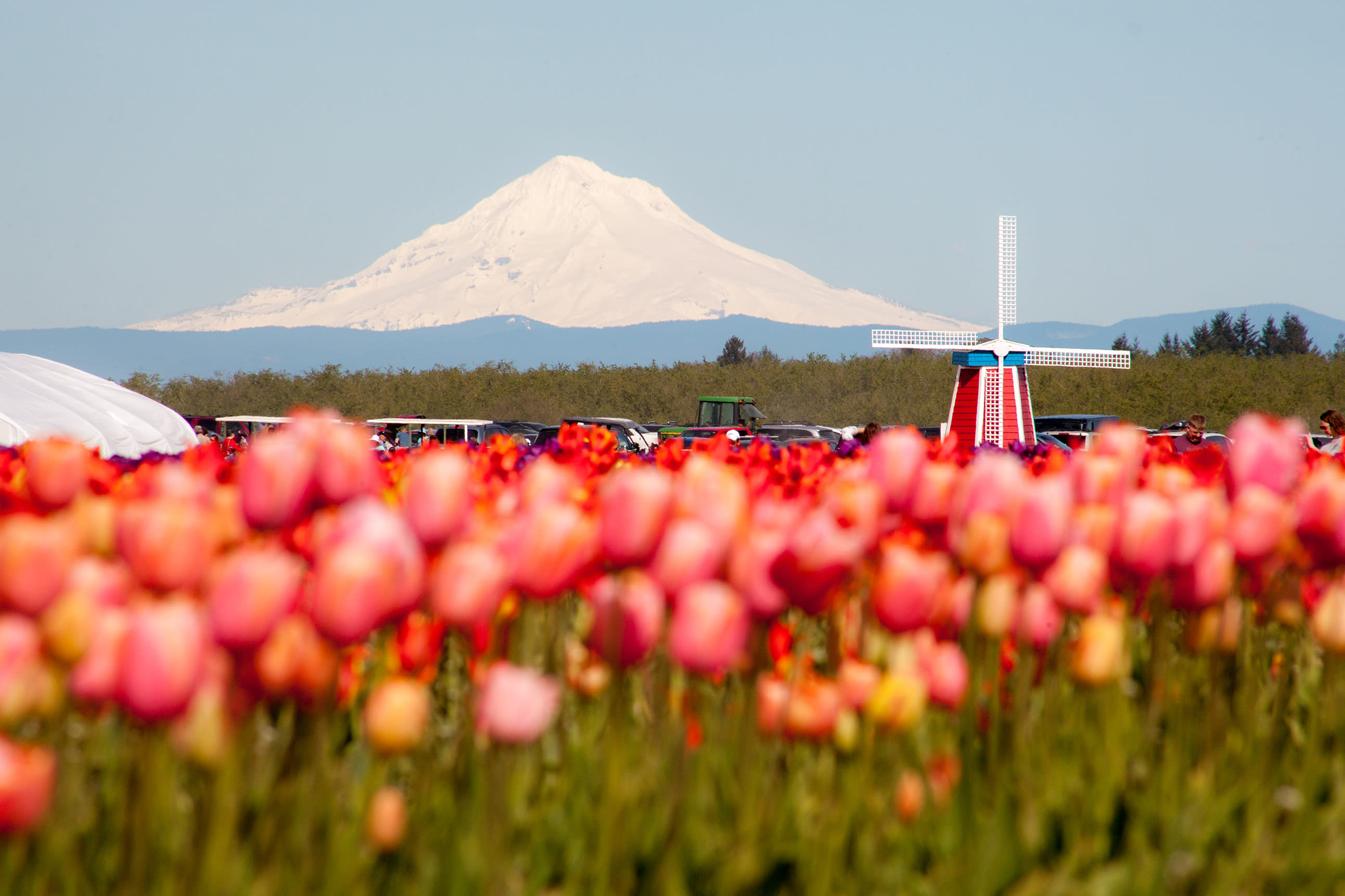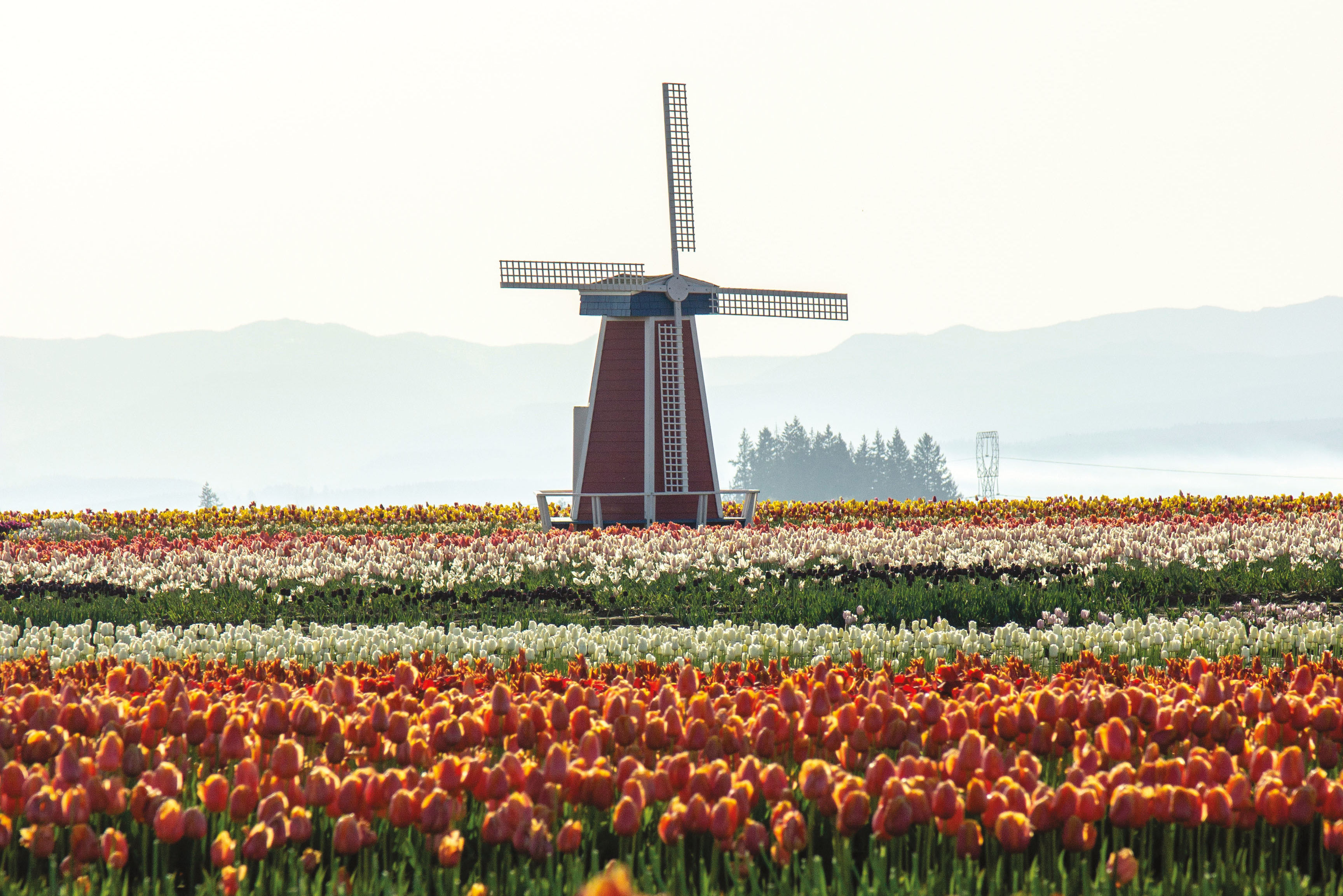Hardy Fuchsias for Portland Gardeners
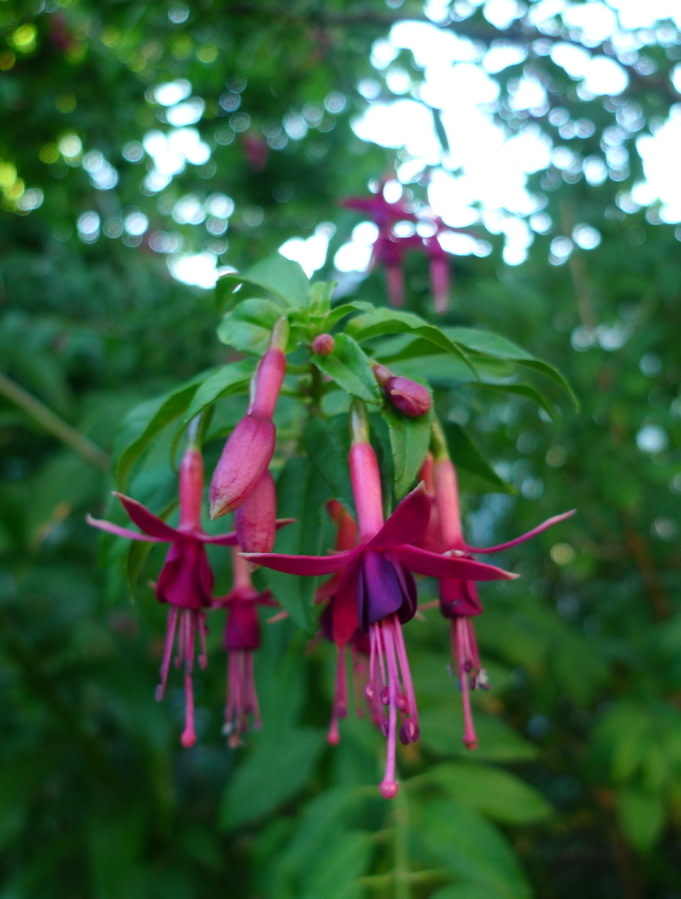
Hardy fuchsias are superstar garden plants. Unlike their tender brethren – those droopy little muppets used in Mother’s Day baskets – hardy fuchsias are lusty workhorse shrubs for our climate, producing masses of flowers from mid-summer to frost. Flower color is typically jewel-tone red and purple (red flared sepals, turned back, and brilliant purple petals forming a tube, or corolla), as well as soft orange, pastel pink, powder blue and even white. An added bonus: an established plant produces enough nectar to keep hummingbirds doing back-flips from the start of summer until after the first hard freeze.
Nearly all fuchsias are native to Central and South America. The most commonly grown species in the Pacific Northwest is F. magellanica, which grows in the temperate regions of Argentina and Chile, as far south as the tip of South America.
In the Pacific Northwest, F. magellanica can reach up to 10 feet in height and width in a protected spot. In a mild winter, it retains full height and most of its leaves, sometimes even producing flowers during warm spells in December. In the coldest winters, it dies down to the ground, resprouting from the base in spring.
Smaller cultivars and hybrids can range from less than a foot to up to six feet in height. Hardy fuchsias can be upright in habit, or semi-trailing.
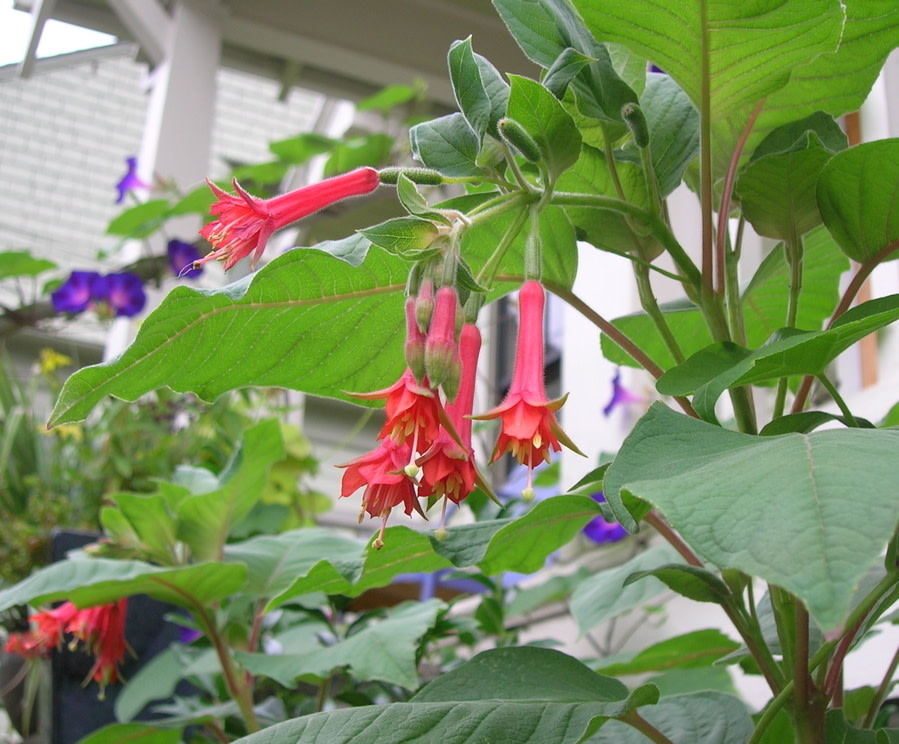
Growing Tips:
• Know that many fuchsias can grow larger than the sizes given – sometimes much larger. Sizes given are usually assuming plants die to the ground each winter. If the previous winter is mild, some 4' tall cultivars - usually those with small, slender flowers versus the big, fat flowers - can reach to 10' in a season. Prune fuchsias to the ground in late March to keep small and bushy.
• Water fuchsias well through their first season to establish a strong root system.
• An established fuchsia – especially F. magellanica selections – can take a dry position, if planted in clay soil and roots are shaded.
• Fuchsias flower best with plenty of sun. But can look handsome in shade – they just don’t flower as much.
• Improve hardiness by planting crown 2-4” deeper than you normally would.
• Always check the cold-hardiness of any fuchsia you buy. Hardiness can vary considerably between cultivars, from being completely cold-hardy in our region to being killed with the first frost. Choose "hardy fuchsias" if you want to plant them outdoors.
• If you don't want to plant fuchsias in your mod, angular garden, just tuck one in an out-of-the-way corner or behind other plants, where it will flower lustily, drawing hummingbirds behind the scenes without distracting you with those luscious flowers!
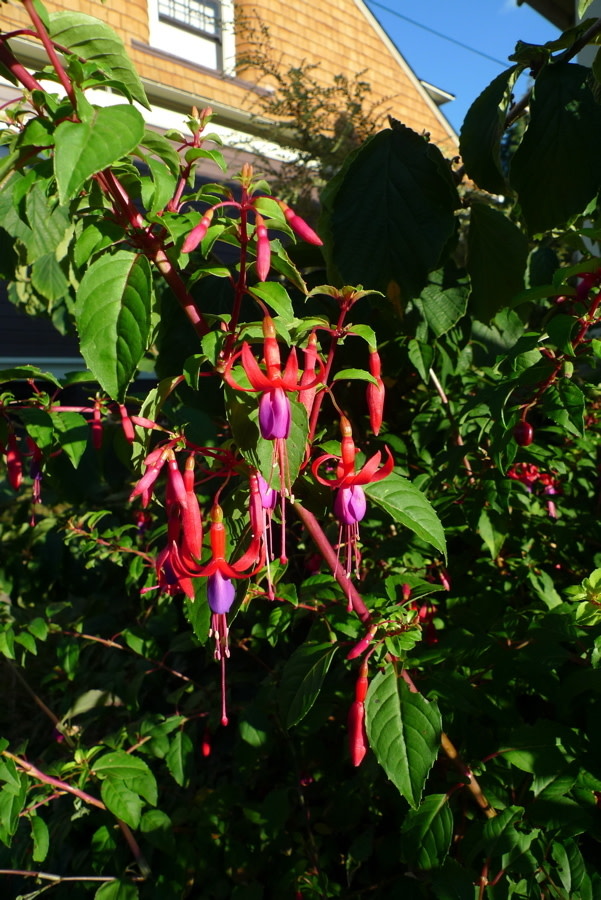
Find them:
Xera Plants (wholesale only, but their selection is great – just go here to see the list of local nurseries that sell their plants)

